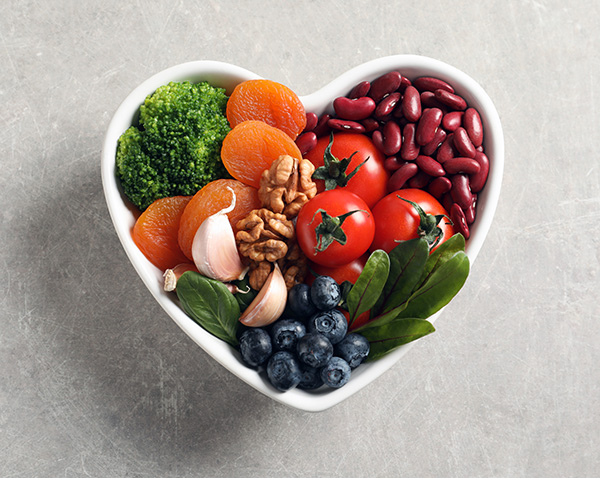Easy Ways to Eat for Heart Health
Posted: February 28, 2022 | By: Stacy Croninger

Your heart is an important organ and you need to do all you can to keep it healthy. Last week we talked about exercise for your heart so this week we’re covering foods to support your heart. When you’re talking about heart healthy foods, there are lots of options.
The Basics
When eating for a healthy heart there are a few basics to keep in mind. These are provided by Heart.org.
- Include: Fruits and vegetables, whole grains, beans and legumes, nuts and seeds, fish (preferably oily fish with omega-3 fatty acids), skinless poultry and lean animal proteins, and plant-based proteins
- Limit: Sweetened drinks, sodium and salty foods, saturated fats and dietary cholesterol, fatty or processed red meats – if you choose to eat meat, select leaner cuts, refined carbohydrates like added sugars and processed grain foods, full-fat dairy products, and tropical oils such as coconut and palm oil
- Avoid: Trans fat and partially hydrogenated oils – found in some commercially baked and fried foods
Also, Doc Wallach has a list of foods that he recommends for good health and to absorb nutrients. The Good Food vs Bad Food list identifies foods that will help support a healthy heart.
Keeping It Easy
For food changes to stick, it typically needs to be easy and something you’ll do over and over so that it becomes second nature. The following tips are provided by the Mayo Clinic and Heart.org.
- Control your portion size. Most of us eat more than we need. Knowing portion sizes helps you select the correct amounts. For example, a serving of meat, fish or chicken is about 2 to 3 ounces, or about the size and thickness of a deck of cards
- Try eating on smaller plates to help with portion size – your plate will look full, which will trick your brain and help you stick to the correct amounts.
- Eat out less and cook at home. This helps you eat healthier versions of foods, because you control how they are cooked. It may help your food budget as well.
- While fresh fruits and vegetables are ideal, they are not always in season. In that case, choose frozen or choose to eat only those items that are in season.
- Read labels to make sure the foods you are using don’t have hidden sugars, fats, and salt.
- Plan ahead – create daily menus. This will help you make sure you have the ingredients you need. Make sure to build in healthy snacks and have them prepped so they are easy to grab and eat. Planning your meals also helps you build in variety.
Where to Begin
First, don’t get overwhelmed. You don’t have to do all the things at once. Evaluate where you are at with your eating and then decide the area you want to improve. Are you wanting to add more fruits and vegetables? Try adding one to each meal and snack. Or maybe you want to add more plant-based meals into your diet. Designate one day to focus on eating plant-based meals.
As you get comfortable with your first change, re-evaluate and decide what the next change is you want to make. Repeat this as many times as needed until you are eating a heart healthy diet. And as always, to help you get the most nutrients, make sure you are including the 90 For Life products in your daily routine.
Posted in:

